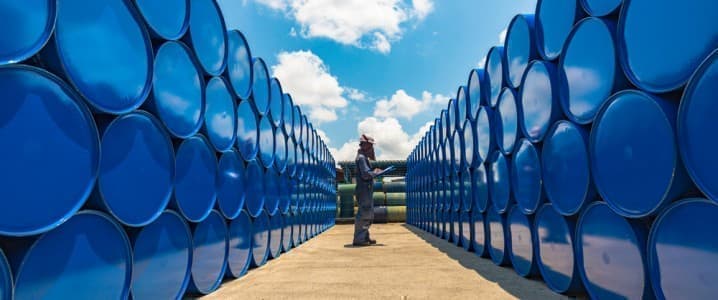The price of West Texas Intermediate (WTI) opened 2022 at about $75 a barrel (bbl). Last week, the price rose above $90/bbl for the first time since 2014. That was also the last year the price of WTI was above $100/bbl.
To recap, in the first half of 2014, oil prices spent most of the time bouncing between $100/bbl and $105/bbl. But the shale boom had put millions of new barrels of oil into the markets over the course of several years, and by mid-2014 the market was approaching an over-supply situation. The price of oil started to decline, but then in the second half of the year OPEC embarked upon a price war to win back market share that had been lost to the American shale boom.
The result was that the bottom fell out of the oil market. By the end of 2014, the price had declined to $53/bbl. The price remained depressed for all of 2015, and by early 2016 WTI fell below $30/bbl.
Related: OPEC’s No.2 Fails To Reach Oil Output Quota
At the time, I called this episode OPEC’s Trillion Dollar Miscalculation. I don’t believe that if OPEC knew how far oil prices would fall — and knew that their efforts wouldn’t actually derail the U.S. shale boom — that the cartel would have embarked upon that strategy.
The question now is whether the current situation is more like the first half of 2014, or whether it is more like 2011, when prices rose above $100/bbl and largely stayed there for the next three years.
I would argue that we are somewhere in between. In 2011, the markets weren’t oversupplied, but that’s where they were ultimately headed. U.S. oil production has increased by 600,000 barrels per day (bpd) year-over-year, but we are still 1.5 million bpd below the levels just before the Covid-19 pandemic hit the U.S. Thus, with demand largely recovered to pre-pandemic levels, we are still undersupplied relative to two years ago.
Last month OPEC and its allies said they would increase oil production by a total of 400,000 bpd in February. However, the cartel has been undershooting its production targets. That helps keep oil prices high, especially in light of the slow ramp-up of U.S. oil production.
When I made my energy sector predictions last month, I noted that “OPEC is always the wildcard.” They want the highest oil prices the market can bear, but that is always tempered by non-OPEC oil production. There are also demand factors that OPEC has to consider. High oil prices create incentives for alternatives, like faster adoption of electric vehicles.
So, how will it all shake out? I still believe the U.S. will significantly increase oil production this year, and that will help temper oil prices. It’s not at all clear to me that the 17% price increase in WTI that we saw in January is justified based on the fundamentals.
But oil prices overshoot the fundamentals all the time. WTI at $145/bbl in 2008 overshot the fundamentals, and the oil price plunge deep into negative territory in 2020 overshot the fundamentals. And when the correction toward the fundamentals happens, it can be swift.
Still, with oil just 8% away from that $100/bbl mark, and momentum continuing from January, it seems more likely than not that WTI will reach that level. But how long can it stay there, and where is the top of this current bull market in oil? I will be among those surprised if it’s still at that level in the second half of the year.
By Robert Rapier
More Top Reads From Oilprice.com:
- U.S. Gasoline Prices Soar To 2014 High
- Colombia’s Oil Industry Is Finally Showing Signs Of Life
- The European Energy Crisis Was Inevitable



















To these two unique circumstances could be added two additional bullish factors, namely an accelerating decline of global of global oil inventories estimated to have shed 700 million barrels in 2021 and still falling and a shrinking global spare production capacity mostly OPEC+’s.
Another major difference between 2014 and 2022 is that in 2014 US shale oil production was a force to be reckoned with while in 2022 it is a spent force.
OPEC+ is doing its utmost to keep the market balanced. OPEC+ has enough spare capacity to keep the oil market balanced in both 2022 and 2023. Beyond that, it urgently needs to add more capacity. This means it has to start investing heavily in expanding capacity immediately as it normally takes up to 5 years before investment reaches fruition.
On the other hand, a comeback of US shale oil production isn’t materializing despite Brent crude touching $95 a barrel yesterday. The reason is that the sweet spots in the shale plays have already been used so drillers are now moving to less productive plays. Another reason is that well productivity has been declining. To this could be added the lack of access to capital by the shale drillers as before because investors are interested in a healthy return on their investments rather than a reckless and unprofitable production.
However, the fact that shale drillers are sticking to production discipline has less to do with capital discipline and far more to do with inability to raise their production beyond 200,000-300,000 barrels a day (b/d) above 2021 production average of 11.0 million barrels a day (mbd) to a projected 11.20-11.30 mbd in 2022.
So my answer to the author’s question about how long will high prices last is that they could last up to 10 years or as long as the super-cycle lasts.
Dr Mamdouh G Salameh
International Oil Economist
Visiting Professor of Energy Economics at ESCP Europe Business School, London